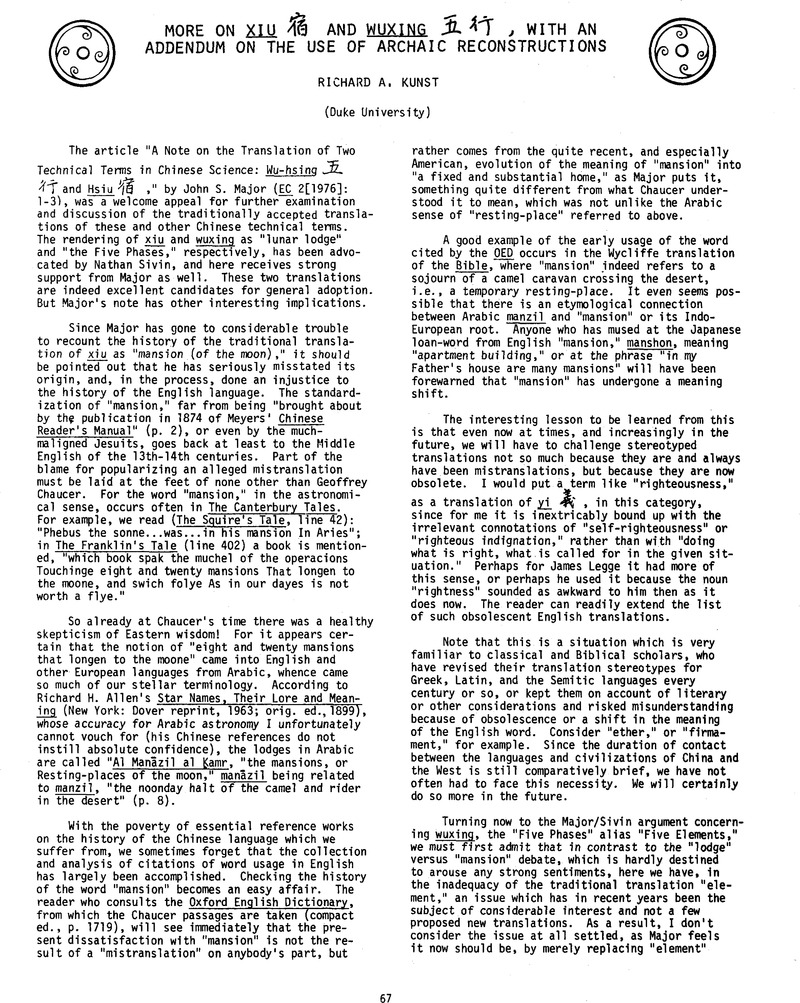No CrossRef data available.
 and Wuxing
and Wuxing  , with an Addendum on the Use of Archaic Reconstructions
, with an Addendum on the Use of Archaic ReconstructionsPublished online by Cambridge University Press: 26 March 2015

1. Wilhelm, /Baynes, , The I Ching, or Book of Changes, 3rd ed. (Princeton, 1967), p. 309Google Scholar.
2. In “The Auspices of T'ang,” Journal of the American Oriental Society 83 (1963): 200Google Scholar.
3. For a discussion of some examples of such anachronism, see Keightley, David N., “Religion and the Rise of Urbanism,” JAOS 93(1973): 529, 532Google Scholar.
4. Cf., Fagao, Zhou![]() , Hanzi gujin yinhui
, Hanzi gujin yinhui ![]() (A pronouncing dictionary of Chinese characters) (Hong Kong, 1973), p. 71Google Scholar, where the Old Chinese reconstructions given for xiu
(A pronouncing dictionary of Chinese characters) (Hong Kong, 1973), p. 71Google Scholar, where the Old Chinese reconstructions given for xiu![]() are (Dong Tonghe) sjǒq; (Karlgren) sjōg; and (Zhou Fagao) sjəw.
are (Dong Tonghe) sjǒq; (Karlgren) sjōg; and (Zhou Fagao) sjəw.